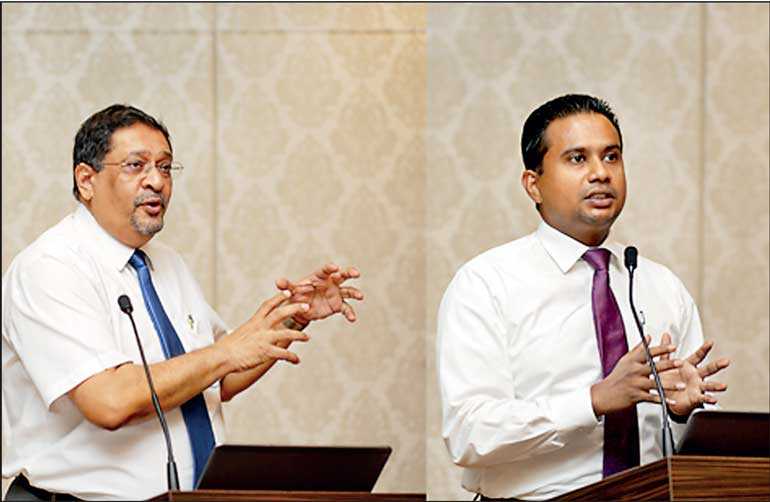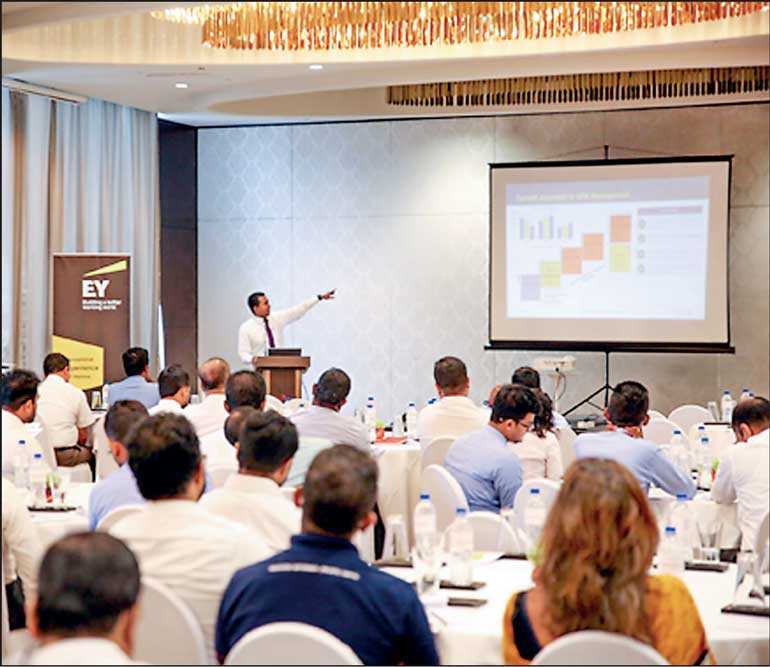Saturday Dec 06, 2025
Saturday Dec 06, 2025
Tuesday, 19 November 2019 00:00 - - {{hitsCtrl.values.hits}}


Ernst & Young (EY) Sri Lanka successfully carried out an informative full-day training session for all Licensed Finance Companies on ‘The proposed new directive on Credit Risk Management for Licensed Finance companies’ issued by the Central Bank of Sri Lanka (CBSL).
The event was held at the Movenpick Hotel Colombo and was attended by a large number of participants from finance companies including chief financial officers, finance managers, credit managers, compliance managers and other individuals from finance and credit teams. Timely response of EY Sri Lanka to a pertinent matter impacting LFCs was highly commended by the participants. The discussion included the importance of credit risk management and the journey towards deploying sound credit risk fundamentals in line with the proposed new directive issued by the CBSL and SLFRS 9 Financial Instruments.
The facilitators of the workshop were Manil Jayasinghe, Partner – Assurance and Rajith Perera, Partner/Principal – Financial Accounting Advisory Services. They shared their insights on post implementation experience of SLFRS 09 including current state of implementation, the way forward and lessons learned, combined with the new directives issued by CBSL.
The session also covered areas such as steering and decision making, NPL operating model, monitoring of NPLs and NPL workout activities, early warning mechanisms/watch-lists, main causes of NPLs, including why they are still a problem, importance of credit ratings and how it can help to manage credit risk better.
During his opening remarks for the session, Manil Jayesinghe stated: “The provisions in the previous financial year were increased not purely because of SLFRS 9 Financial Instruments but because of increase in NPL ratio and weak risk management strategies.” This led to the discussion of the importance of having a sound credit risk management technique for finance companies to better manage their risks.
Rajith Perera commenced his session with the current state of SLFRS 9 implementation in the finance sector in Sri Lanka. He stated: “The objective of the new guidance is to deploy the fundamentals of the credit risk management principles. Finance companies may adopt risk management principles which are palatable to their respective base of customers and target markets.”
Initially, he highlighted the challenges that the finance companies face in implementing SLFRS 9 Financial Instrument standard. One of the focal points in the early part of his session was managing rising NPA which is a pertinent issue in the entire industry. He further elaborated on how other countries in the South Asian region tackle this issue by using tools such as Early Warning Signal (EWS) mechanism and other tools available to enable a sound credit risk management fundamentals.
Towards the latter part of the session Perera turned the attention of the participants to an emerging trend in the Sri Lankan financial services sector, which is introducing the concept of credit scoring/grading to assess and monitor the credit risk of customers. He provided the participants with a basic idea of the scoring model landscape, and the benefits that the finance companies can get by moving into a scoring-based approach.